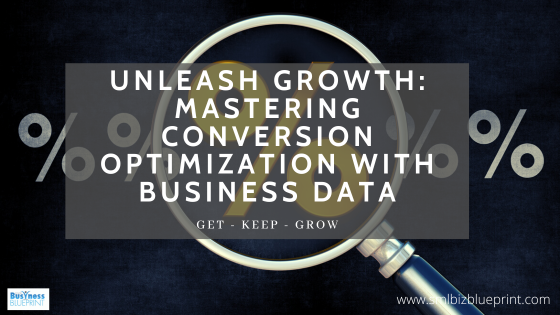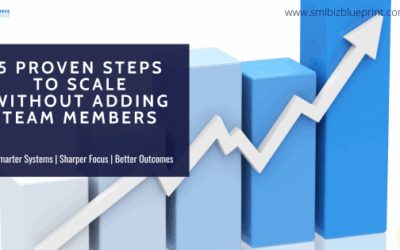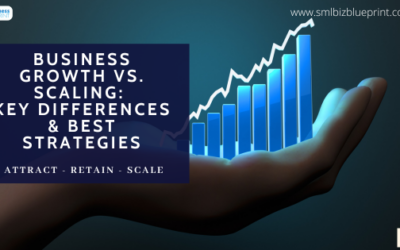Welcome to our guide on leveraging the power of business data to optimize your conversion rates and propel your small business to more growth.
In this guide, we will dive deep into the world of Conversion Rate Optimization (CRO), equipping you with actionable insights you can immediately implement.

Discover how data-driven strategies can transform your business outcomes, why embracing these approaches is imperative, and how to initiate the journey towards higher conversion rates.
Understanding Conversion Rate Optimization (CRO)
Imagine every website visitor as a potential customer and every click as a chance to make a sale. That’s where Conversion Rate Optimization comes into play.
CRO is the systematic process of improving the percentage of visitors who take the desired action on your website—whether that’s making a purchase, signing up for a newsletter, or requesting a quote.
As a small business owner, your resources are valuable, and CRO allows you to make the most of your existing traffic.
Tips for Understanding CRO:
Identify Key Conversion Goals: Define the specific actions you want visitors to take on your website, such as completing a purchase or filling out a contact form.
Analyze Current Performance: Use analytics tools to assess your current conversion rates and identify areas for improvement.
Prioritize Impactful Changes: Focus on optimizing elements that have the potential to make a significant impact on conversions.
The Role of Business Data in CRO
Data is the heart of an effective CRO. Collecting and analyzing relevant data gives you profound insights into your customers’ behaviours, preferences, and pain points.
This information guides your decision-making, helping you tailor your website to meet your customers’ needs and expectations. The result?
A more seamless and engaging user experience that leads to higher conversions.
Tips for Leveraging Business Data:
Set Up Data Collection Early: Implement data collection tools from the start to gather valuable insights from the get-go.
Regularly Review Analytics: Make data analysis a routine task to stay informed about user behaviour trends and patterns.
Segment Your Audience: Divide your audience into segments based on demographics, behaviour, and preferences for targeted optimisation.
Setting Up Effective Data Collection
The journey begins with setting up robust data collection mechanisms. Utilize tools like Google Analytics to track user interactions, understand traffic sources, and measure key metrics.
Customer Relationship Management (CRM) systems allow you to organize and manage customer data effectively. Heatmaps and session recording tools provide visual representations of user behaviour, uncovering hidden patterns and areas of improvement.
Tips for Data Collection Setup:
Choose Appropriate Tools: Select tools that align with your business goals and the data you need to gather.
Set Up Conversion Tracking: Implement conversion tracking to monitor specific actions that indicate success.
Ensure Data Privacy: Adhere to data privacy regulations and obtain user consent when collecting personal information.
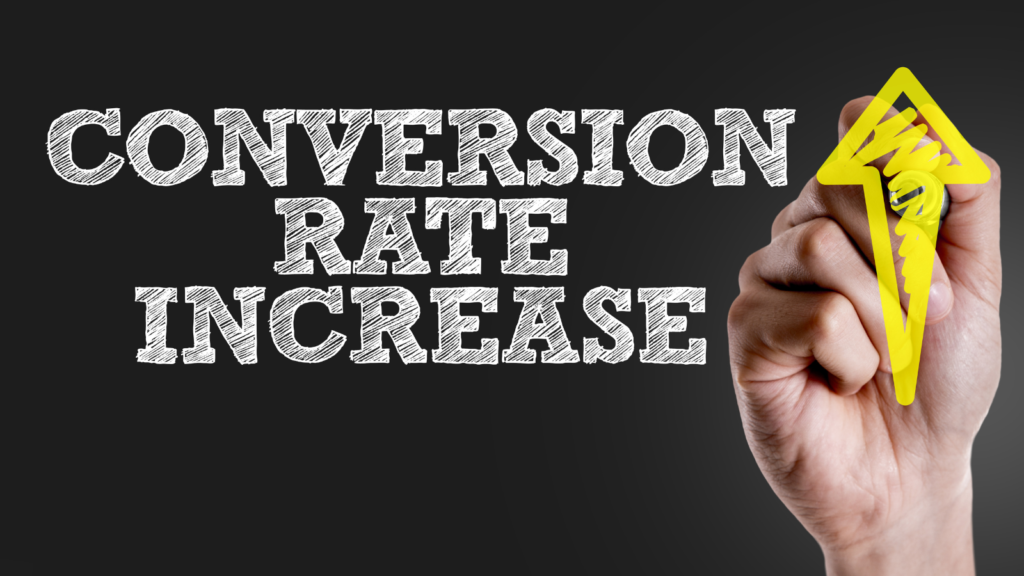
Analyzing User Behavior and Identifying Bottlenecks
Data-driven analysis of user behaviour helps you identify critical conversion funnel stages.
You can pinpoint where users drop off or encounter roadblocks through click tracking and session recordings.
Suppose you run an online store; data might reveal that customers abandon their carts at the payment stage due to a complex checkout process. Armed with this insight, you can streamline the process, reducing friction and increasing conversions.
Tips for Analyzing User Behavior:
Visualize User Journeys: Use flowcharts to map user journeys and identify common paths and drop-off points.
Analyse Exit Pages: Determine which pages have the highest exit rates and investigate reasons for the exits.
Conduct User Surveys: Gather direct feedback from users to understand their pain points and challenges during the conversion process.
Utilising A/B Testing and Data-Backed Experiments
Enter A/B testing, the scientific method for optimisation. A/B testing involves creating two versions of a webpage with one key element changed (like a call-to-action button colour).
By comparing the performance of both versions, you can determine what works best for your audience. For instance, changing the wording on a CTA button from “Get Started” to “Discover Your Potential” might lead to higher engagement.
Tips for A/B Testing and Experiments:
Start with Hypotheses: Formulate clear hypotheses about the changes you want to test and the expected outcomes.
Test One Variable at a Time: Change one element per test to attribute any changes in performance accurately.
Monitor Statistical Significance: Ensure test results are statistically significant before implementing changes site-wide.
Personalization Strategies Based on Data Insights
Personalisation goes beyond addressing customers by their first names. It’s about tailoring the entire user experience based on data insights.
Think of Amazon’s product recommendations or Netflix’s content suggestions. These are driven by data-driven algorithms that analyse past behaviours to anticipate future preferences.
By implementing personalisation strategies, you create a bond of trust and relevance with your customers, directly impacting your conversion rates.
Tips for Implementing Personalization:
Collect Relevant Data Points: Gather data on user browsing history, previous purchases, and interactions to fuel personalization efforts.
Create Dynamic Content: Display personalized product recommendations, content, or offers based on user behaviour.
Test Personalization Algorithms: Continuously refine and test personalization algorithms to improve their accuracy over time.
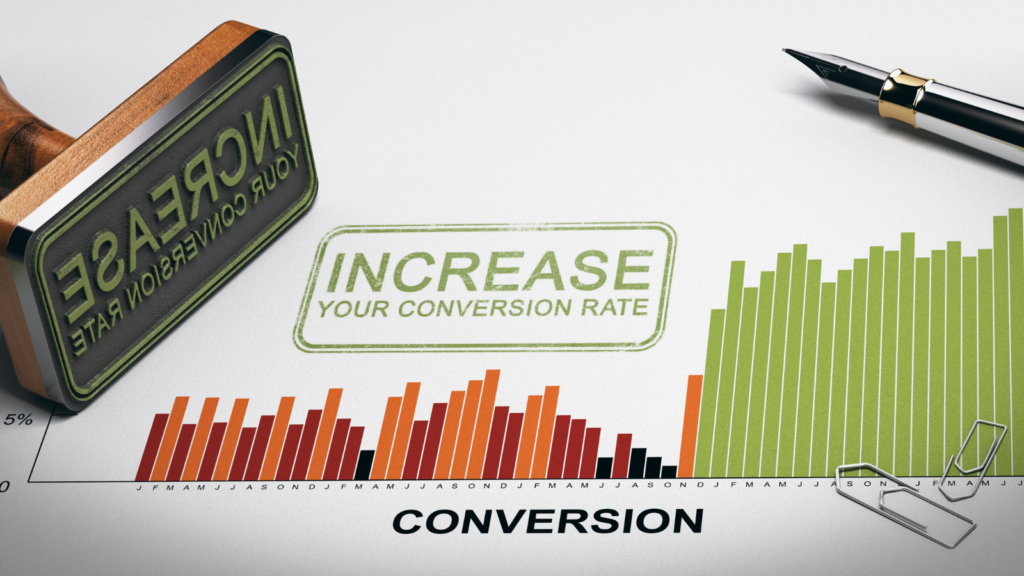
Iterative Optimization and Continuous Improvement
CRO is not a one-time endeavour but an ongoing process of refinement. Regularly monitor and analyse your data to uncover new opportunities for improvement.
Don’t be afraid to take risks and experiment with different strategies. Some may lead to incremental improvements, while others may result in breakthrough results.
The key is to keep learning and adapting based on real-world data.
Tips for Continuous Improvement:
Review Regularly: Schedule regular CRO reviews to ensure that your website remains optimized over time.
Document Insights: Record successful and unsuccessful optimization efforts to inform future decisions.
Stay Updated: Stay informed about industry trends, new tools, and emerging best practices in CRO.
Conclusion
In the dynamic world of online business, the ability to leverage data for Conversion Rate Optimization is a game-changer.
By understanding your customers on a granular level, you can tailor your website to meet their needs, remove obstacles, and create a seamless journey that converts visitors into loyal customers.
Remember, every click is an opportunity, and every conversion is a success story waiting to happen.
Frequently Asked Questions
Q: What is Conversion Rate Optimization (CRO)?
A: Conversion Rate Optimization is the systematic process of improving the percentage of visitors who take desired actions on your website, ultimately leading to higher conversions and business growth.
Q: Why is data crucial for CRO?
A: Data provides valuable insights into customer behaviour, allowing you to identify pain points, optimize user experiences, and make informed decisions that increase conversions.
Q: How do I start collecting data?
A: Utilize tools like Google Analytics, CRM systems, heatmaps, and session recording tools to gather data on user interactions, traffic sources, and critical metrics.
Q: What is A/B testing?
A: A/B testing involves creating two webpage versions with one key element changed, helping you identify the most effective variations for driving conversions.
Q: How can personalization impact conversion rates?
A; Personalization creates a more relevant and engaging user experience, building trust and increasing the likelihood of conversions by catering to individual preferences.
Q: Is CRO a one-time effort?
A: No, CRO is an ongoing process of refinement. Regularly analyze data, experiment with strategies, and adapt based on real-world results for continuous improvement.
Q: Can small businesses benefit from data-driven CRO?
A: Absolutely. Small businesses can gain a competitive edge by using data to optimize their conversion rates, resulting in higher revenue and sustainable growth.
Now that you’ve gained insights into the transformative power of data-driven Conversion Rate Optimization, it’s time to implement these principles.
Start by setting up data collection tools, analysing user behaviour, and identifying areas for improvement. Experiment with A/B testing and consider implementing personalized strategies.
CRO is an ongoing journey, so be prepared to adapt and refine your approach based on real-time data.
Your small business’s success story begins with leveraging the wealth of data at your fingertips.

